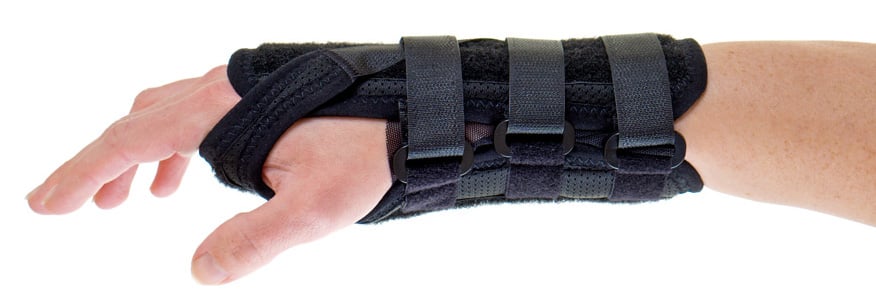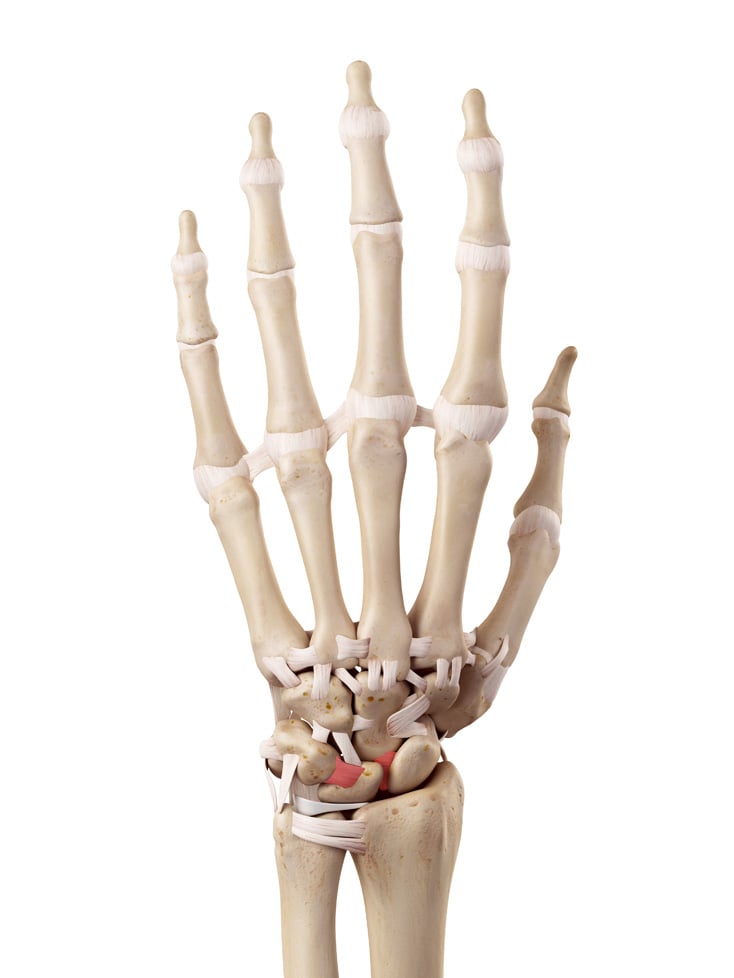What is SLAC Wrist Arthritis?
SLAC stands for “scapho-lunate advanced collapse”. It is a painful condition of the wrist. The scaphoid and lunate are two small bones in the wrist held tightly together by a band of tissue called the scapholunate ligament. When this ligament is injured the unstable wrist bones very gradually develop painful arthritis over months and years. This condition is usually seen in adults but can occasionally occur in younger people with severe wrist injuries. The end result of untreated SLAC wrist is a severe wrist osteoarthritis which is often painful and limits function.

Causes
Most cases of SLAC wrist start with a significant wrist sprain or fracture, but occasionally no history of injury is recalled. Some cases of scapholunate ligament injury may be due to repetitive heavy loading of the wrist as seen with obesity, or inflammatory conditions of the wrist that damage the ligament.

Ligaments of the Hand and Wrist
Signs and symptoms
- Pain (thumb side of the wrist)
- Swelling (back of wrist, and more on thumb side)
- Stiffness of the wrist
- Clicking, popping, grinding, or clunking sensations in the wr
Is there a test for SLAC Wrist?
Your symptoms and medical history as well as an examination of your hand and wrist can help to diagnose SLAC wrist. X-rays are usually confirmatory, although sometimes an MRI or wrist arthroscopy is recommended to evaluate the scapholunate ligament and joint surfaces in early cases.
Treatment
Treatment for SLAC wrist arthritis depends largely on how advanced the arthritis is. Patient age and activity level are also important considerations. There are many different options, and your surgeon will help to recommend which is best for you.
Nonoperative treatment:
- Activity modifications
- NSAIDs
- Splinting
- Steroid injections
Operative treatment:
- Wrist Arthroscopic Debridement: Small camera and instruments in the wrist clean out damaged tissues.
- Partial Wrist Denervation: Nerve endings that sense pain from the arthritic wrist are surgically snipped.
- Proximal Row Carpectomy: The arthritic bones of the wrist are removed but the wrist is not fused.
- Wrist Fusion: The arthritis is removed, and the wrist bones fused together (wrist no longer moves with the goal of reducing pain).
Ready to confirm a diagnosis and fix the problem or just want to learn more?
Our board-certified orthopedic hand and wrist surgeons Eric Angermeier, MD and Kyle Kokko, MD, PhD, are here to help! They can often diagnose the problem in one visit, and get you started with a treatment plan. We offer a wide variety of both nonoperative and operative treatment options.
Call today for a clinic or telehealth appointment! 854-429-4263